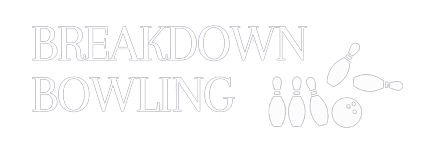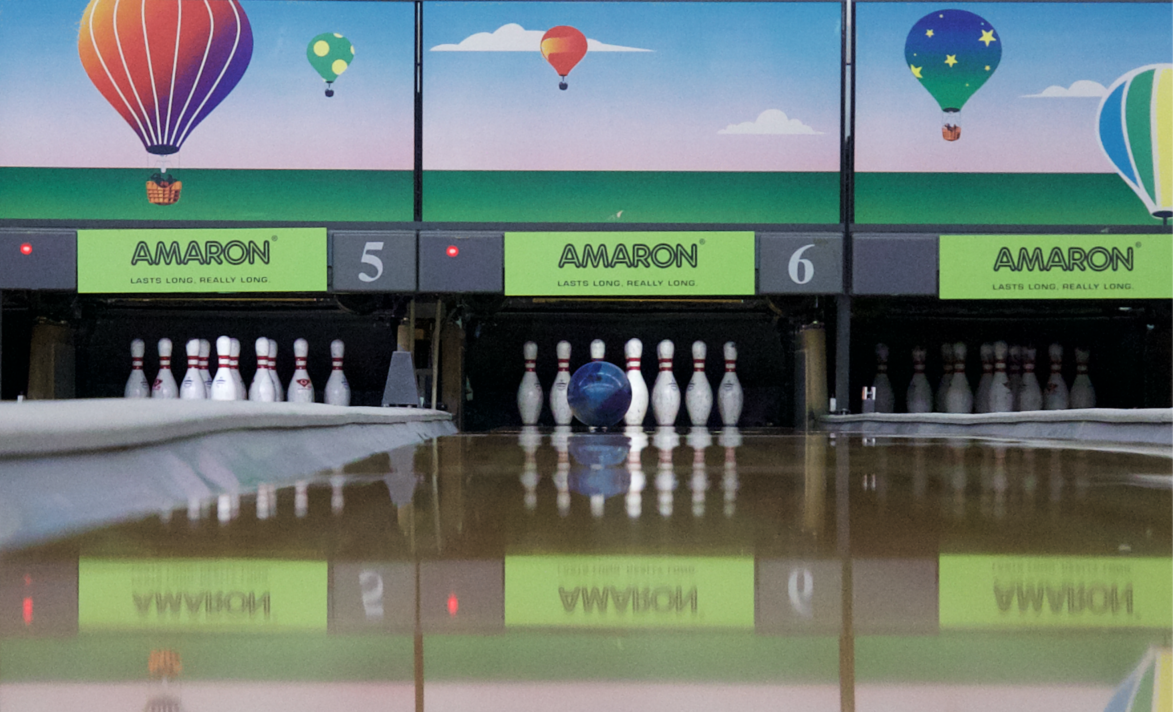Have you ever gone bowling and wondered how long the bowling lanes are, or how heavy the bowling pins must be if they can be so easily knocked down by the bowling ball? In this article, we’ll introduce the hard numbers and dimensions behind the 3 most important objects in the sport of bowling: the lanes, balls and pins!
The Bowling Lane
What are the dimensions of a bowling lane?
A bowling lane comprises of the (the part where you walk on), and the actual lane (the part where your ball rolls on). The approach consists of 3 rows of dots, and is 15 feet in length. The lane, from the foul line to the first pin on the pin deck, is 60 feet in length (slightly more than 18 metres). The first row of dots on the lane is 7.5 feet from the foul line, and the tip of the center arrow is 15 feet from the foul line.
There are a total of 39 boards on the lane, and in total they are 42 inches (around 1 metre) wide.
<insert photo of gutter section>
Outside the width of the lane there are 2 , which you should avoid throwing your ball into! As you progress in your bowling, you may find the need to estimate the of your ball. Many alleys have gutters that are made up of 4 pieces joined together, so you can use each joint as an indicator of 15 feet!
What are bowling lanes made of?
Bowling lanes are made of either wood, or a synthetic material.
Wooden lanes, specifically pine or maple, are more common in older alleys. However, they are slowly falling out of favour to synthetic lanes, because they experience more wear and tear as bowlers constantly drop their balls on the lane, leading to higher maintenance costs for bowling alley operators.
Wooden lanes, especially older wooden lanes, absorb oil quicker and have higher friction than synthetic lanes. This leads to the oil pattern transitioning <link to article on lane transition> much faster than on synthetic lanes.
The Bowling Pin
What are the dimensions of a bowling pin?
According to USBC specifications, a bowling pin has an ideal weight of 3 pounds and 8 ounces (slightly more than 1.5kg), and a height of 15 inches (38cm)
How are bowling pins arranged?
There are 10 pins on the pin deck, arranged in four rows to form an equilateral triangle.
<insert diagram>
From the diagram above, pin 1 (the head pin) occupies the first row, pins 2 and 3 occupy the second, pins 4, 5 and 6 occupy the third, and pins 7, 8, 9 and 10 occupy the last row.
Pins that are next to each other are 12 inches (around 30.5cm) apart. For example, pins 1, 2 and 3 are all 12 inches apart from each other.
It is important that the arrangement of the pins is kept constant during a bowling game, as how far apart the pins are from each other greatly affects the mechanics of a strike.
The Bowling Ball
How heavy is a bowling ball?
Bowling balls are generally 6 to 16 pounds in weight (2.7 to 7.3kg). Almost all competitive bowlers use balls that are 15 or 16 pounds, as that gives the greatest strike potential. However, as a beginner, it is recommended that you do not pick a ball that is more than 10% of your body weight or you might injure yourself.
What are the holes on a bowling ball for?
Most bowling balls have 3 holes, for your ring finger, middle finger and thumb. You may see some bowling balls with a fourth hole at its side, this is a balance hole used to change the distribution of weight on the bowling ball, which can affect the way it rolls. However, this practice has been banned in competitive bowling since 2020.
You may also find that some balls do not have a thumb hole. Two-handed bowling, where the bowler inserts only his ring and middle fingers, has greatly increased in popularity in the last 10 years, especially with the success of Jason Belmonte and other two-handed bowlers.
What are bowling balls made of?
Bowling balls are made of resin consisting of a variety of synthetic organic compounds, such as polyester, polyurethane and other chemical additives. Generally, there are 3 types of bowling balls, polyester balls (also called plastic balls), balls and reactive balls. Each have different characteristics when rolled down the lane, and are used for different purposes. For more information, read the deep dive article on types of bowling balls!

